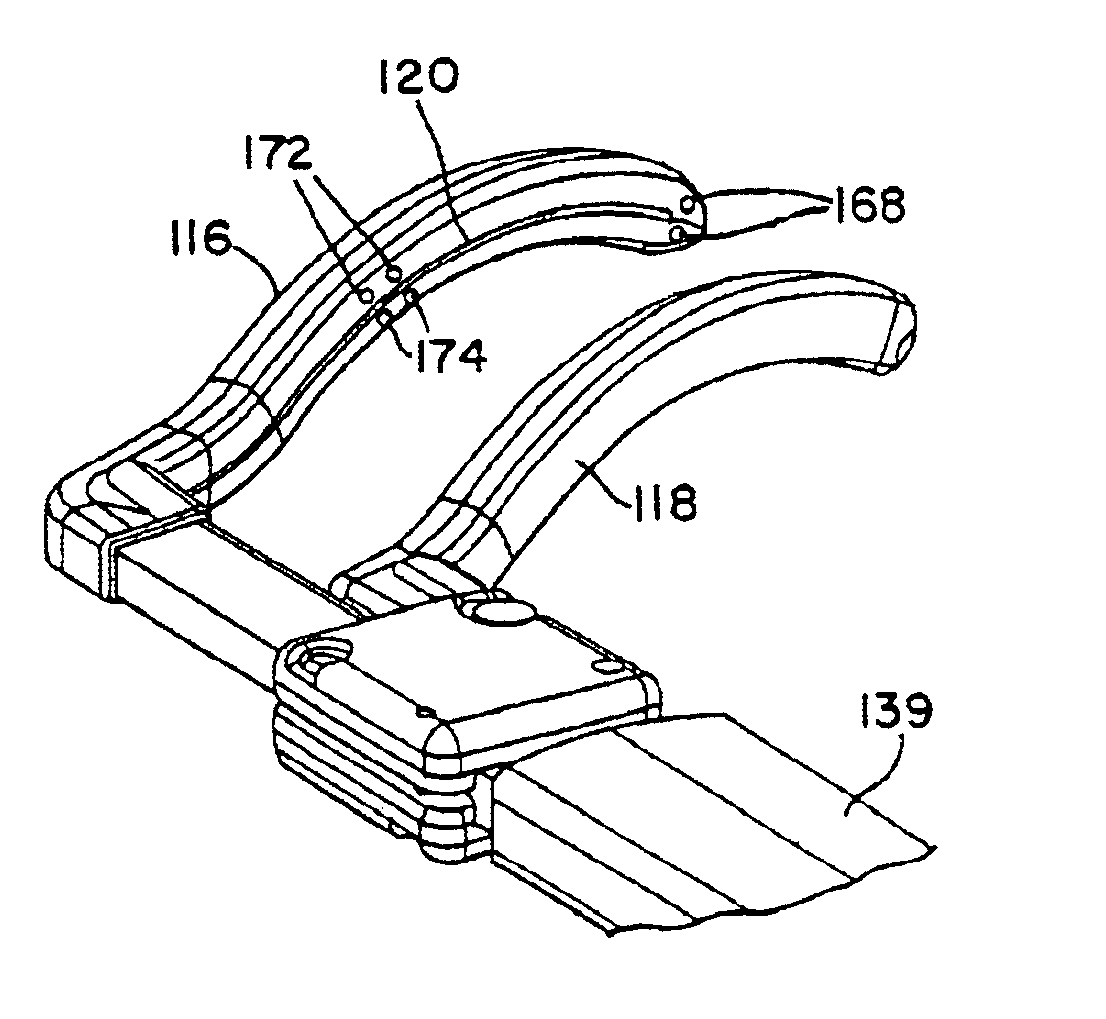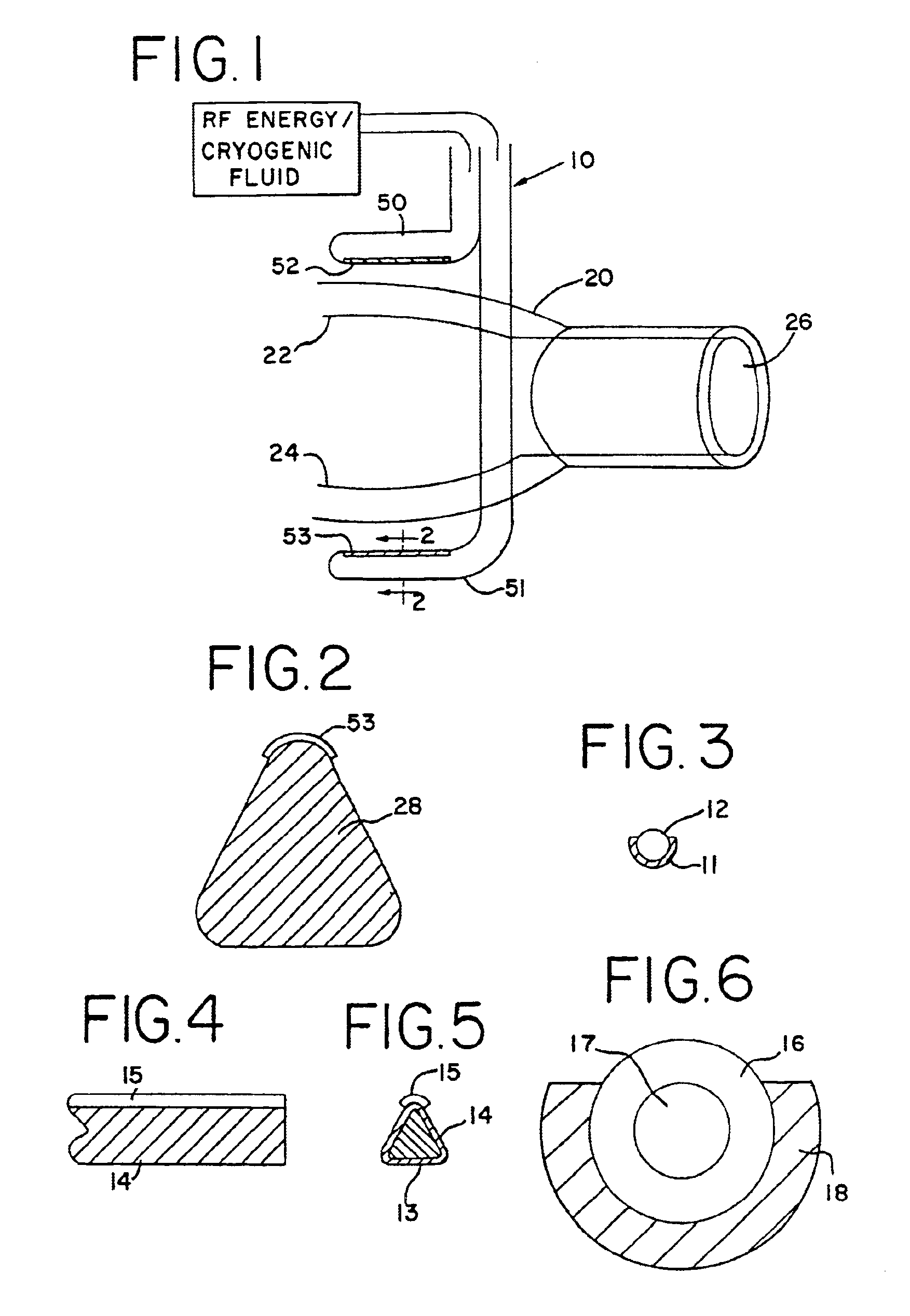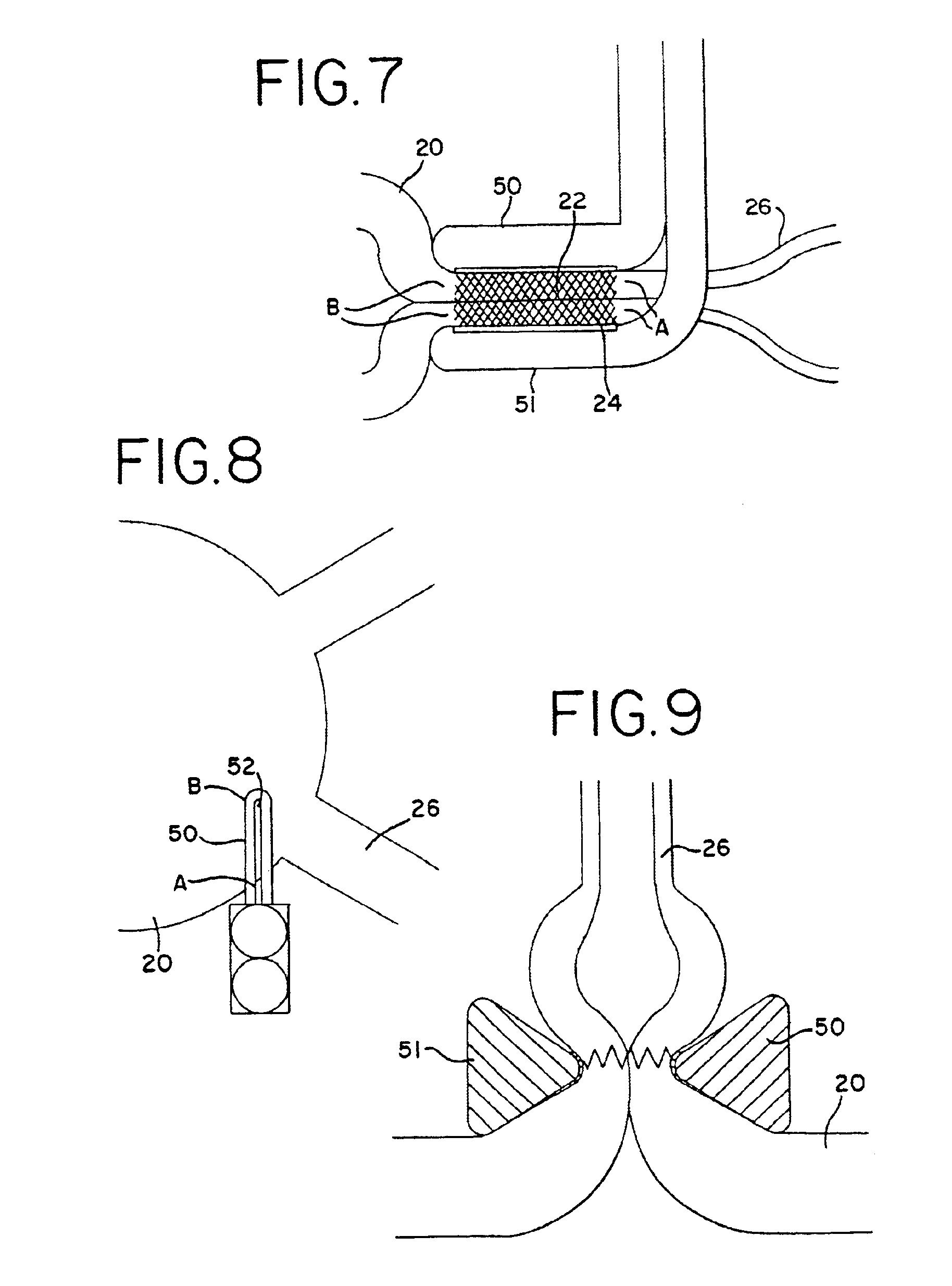Common problems encountered in this procedure are difficulty in precisely locating the
aberrant tissue, and complications related to the ablation of the tissue.
Locating the area of tissue causing the arrhythmia often involves several hours of electrically “mapping” the inner surface of the heart using a variety of mapping catheters, and once the
aberrant tissue is located, it is often difficult to position the
catheter and the associated electrode or probe so that it is in contact with the desired tissue.
The application of either RF energy or ultra-low temperature freezing to the inside of the
heart chamber also carries several risks and difficulties.
It is very difficult to determine how much of the
catheter electrode or cryogenic probe surface is in contact with the tissue since
catheter electrodes and probes are cylindrical and the heart tissue cannot be visualized clearly with existing fluoroscopic technology.
Further, because of the cylindrical shape, some of the exposed electrode or probe area will almost always be in contact with
blood circulating in the heart, giving rise to a risk of
clot formation.
Clot formation is almost always associated with RF energy or cryogenic delivery inside the heart because it is difficult to prevent the blood from being exposed to the electrode or probe surface.
Some of the RF current flows through the blood between the electrode and the heart tissue and this blood is coagulated, or frozen when a cryogenic probe is used, possibly resulting in
clot formation.
When RF energy is applied, the temperature of the electrode is typically monitored so as to not exceed a preset level, but temperatures necessary to achieve
tissue ablation almost always result in blood coagulum forming on the electrode.
Overheating or overcooling of tissue is also a major complication, because the
temperature monitoring only gives the temperature of the electrode or probe, which is, respectively, being cooled or warmed on the outside by
blood flow.
The actual temperature of the tissue being ablated by the electrode or probe is usually considerably higher or lower than the electrode or probe temperature, and this can result in overheating, or even
charring, of the tissue in the case of an RF electrode, or freezing of too much tissue by a cryogenic probe.
Overheated or charred tissue can act as a locus for
thrombus and
clot formation, and over freezing can destroy more tissue than necessary.
It is also very difficult to achieve ablation of tissue deep within the
heart wall.
As the
depth of penetration increases, the time, power, and temperature requirements increase, thus increasing the risk of
thrombus formation.
Multielectrode catheters have been developed which can be left in place, but continuity can still be difficult to achieve, and the lesions created can be quite wide.
Because of the risks of
char and
thrombus formation, RF energy, or any form of endocardial ablation, is rarely used on the left side of the heart, where a clot could cause a serious problem (e.g.,
stroke).
Because of the
physiology of the heart, it is also difficult to access certain areas of the
left atrium via an endocardial, catheter-based approach.
However, it is still difficult to create long, continuous lesions, and it is difficult to achieve good
depth of penetration without creating a large area of ablated tissue.
When used from an endocardial approach, the limitations of all energy-based ablation technologies to date are the difficulty in achieving continuous transmural lesions, and minimizing unnecessary damage to endocardial tissue.
However, this technology creates rather wide (greater than 5 mm) lesions which could lead to
stenosis (narrowing) of the pulmonary veins.
Additionally, there is no feedback to determine when full transmural ablation has been achieved.
Consequently, there is no energy delivered at the backplate / tissue interface intended to ablate tissue.
It is important to note that all endocardial ablation devices that attempt to ablate tissue through the
full thickness of the
cardiac wall have a risk associated with damaging structures within or on the outer surface of the
cardiac wall.
As an example, if a catheter is delivering energy from the inside of the atrium to the outside, and a coronary
artery, the
esophagus, or other
critical structure is in contact with the
atrial wall, the structure can be damaged by the transfer of energy from within the heart to the structure.
 Login to View More
Login to View More  Login to View More
Login to View More 


